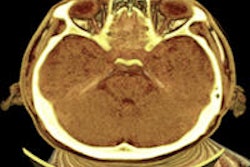Dear Advanced Visualization Insider,
Type 1 endoleaks after infrarenal endovascular aneurysm repair (EVAR) of abdominal aortic aneurysms can be a real problem, often requiring a secondary intervention and a prolonged hospital stay. They are also associated with aneurysm rupture. Fortunately, 3D workstations can significantly decrease the rate of these dangerous endoleaks, according to a French research team.
A group from Lille University Hospital found that using 3D workstations to size endografts during EVAR planning can improve short- and medium-term outcomes for patients. Based on their findings, the researchers believe 3D workstations are now mandatory to improve EVAR results. Click here for all the details.
In other articles in your Advanced Visualization Digital Community, CT has now become the star of the show for identifying and characterizing brain stones, or large intracranial calcifications, according to Belgian researchers. Multiplanar and 3D reconstructions have enabled CT to supplant skull x-rays for diagnosing intracranial pathology and the modality outperforms MRI for identifying and characterizing intracranial calcifications. Learn more by clicking here.
The market for mobile health apps is booming, according to speakers at last month's European Health Forum Gastein in Bad Hofgastein, Austria.
Also, a Dutch team recently found that bone suppression computer-aided detection software could provide a significant increase in the diagnosis of pulmonary nodules. Performance gains were particularly evident for nodules of moderate and subtle conspicuity, according to the team from Radboud University Nijmegen Medical Center. Find out more here.
Do you have an idea for a topic you'd like to see covered? As always, please feel free to email me.














